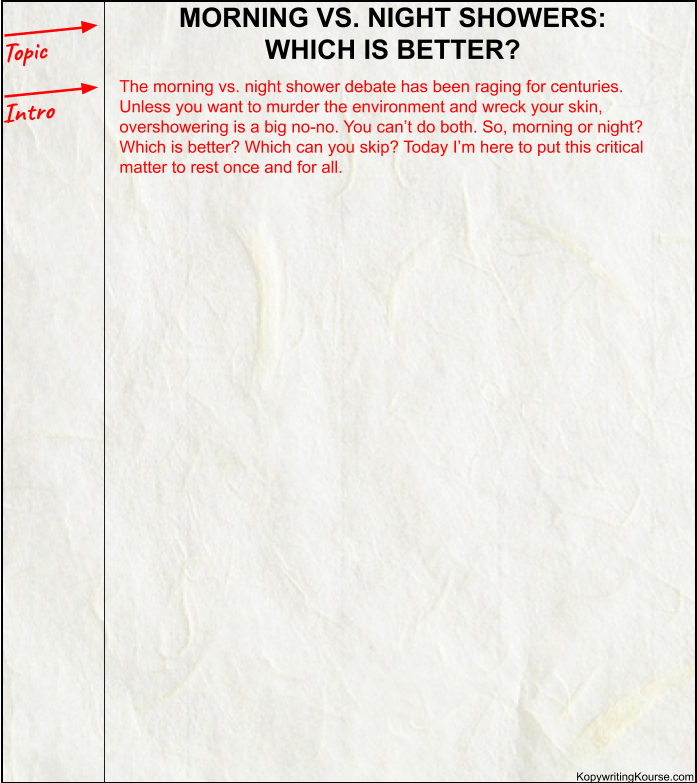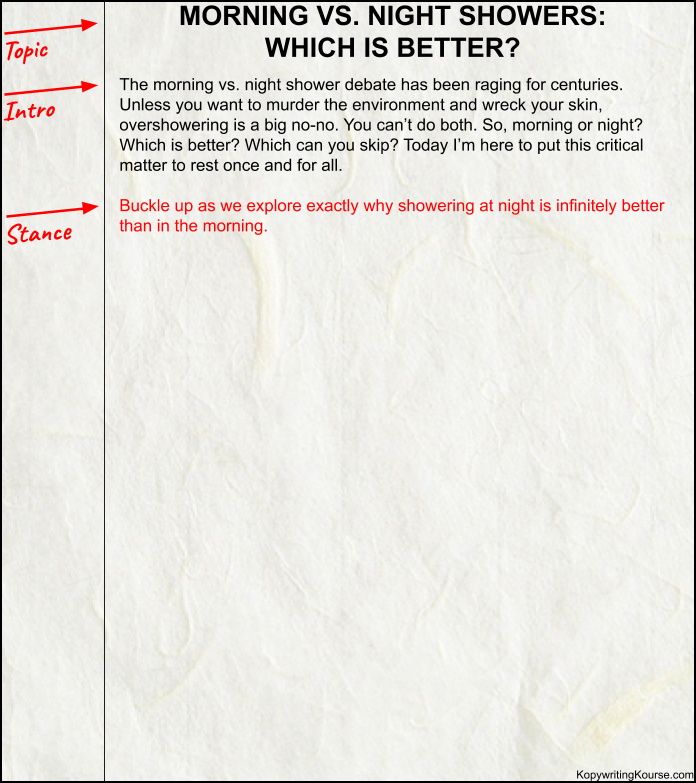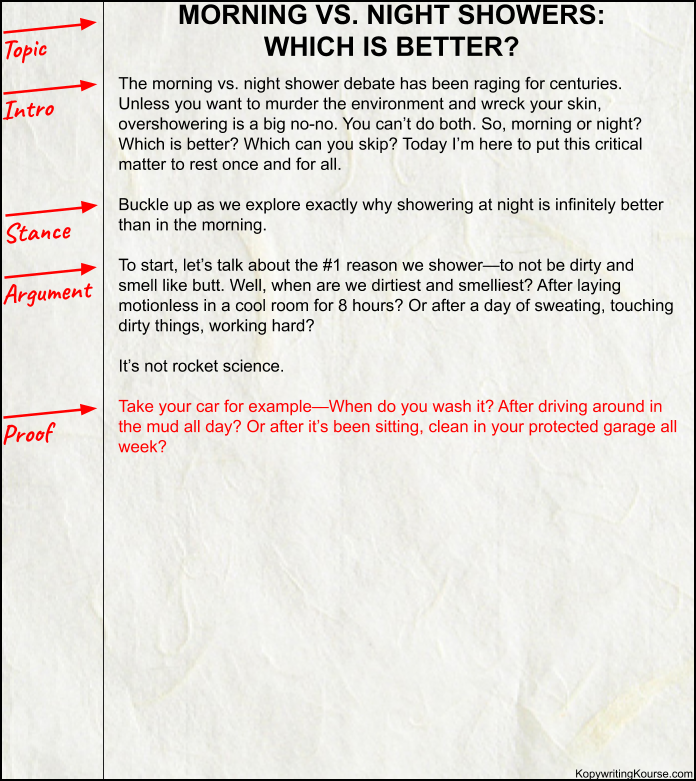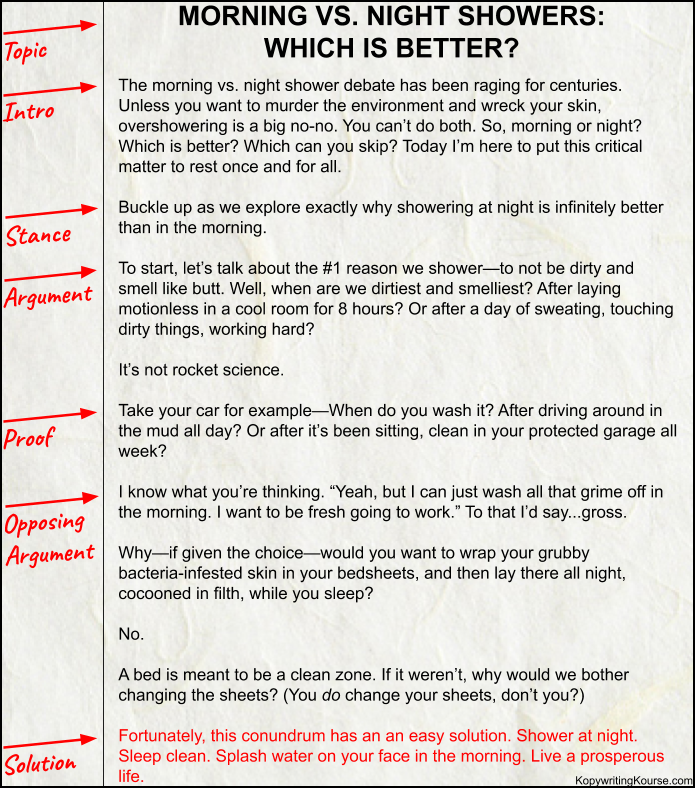-
Signup for our email:
- Get notified of new posts
- Get the S.W.I.P.E.S. Email
- Get a masterclass in copy
-
Events
Live Feed
- Yesterday
-
-

Click the link and subscribe to a 3-5 bag subscription.
Susana Crofton replied to Vince McDonnell's topic in Emails
- cold email
-
(and 1 more)
Tagged with:
-
Landing Pages + Sales Pages: Quick Question ...
Kathleen Killins replied to Kathleen Killins's topic in Web Pages
- landing page
- sales page
-
(and 1 more)
Tagged with:
-
-

The S.W.I.P.E.S. Email (Friday July 19th, 2024)
Neville commented on Neville's blog entry in Copywriting Course Blog
-

The S.W.I.P.E.S. Email (Friday July 26th, 2024)
Neville commented on Neville's blog entry in Copywriting Course Blog
-
-
-
-

Please review landing pages
Neville replied to Kathleen Killins's topic in Emails
- cold email
-
(and 1 more)
Tagged with:
-
-
- Last week
-
Question about growing an ecommerce business online
Kathleen Killins posted a question in Questions?
-

Craigslist - Amazing Email Marketing Deal ad copy
Johnny replied to Matthew Pattinson's topic in Ads
-
-
Creating Images Using Google Drawings
karelle chienkoua commented on Neville's lesson in Creating Images
-
-
-
-

Noah Kagan on how to reverse-engineer a best selling book
Neville commented on Neville's lesson in Interviews
-
-
How to Write an Editorial That’s Persuasive AF

Got a strong opinion on something?
Wish you could convince the world to think like you do? To show them why you’re right and everyone else is crazy?
Then you, my friend, should learn how to write an editorial.
An editorial expresses your opinion about any current topic or issue, aiming to persuade readers to see the world from your perspective. The cool thing about editorials is that—unlike other types of formal writing—you can be biased and let your true colors sparkle.
Now, that’s not to say you don’t need evidence. To form a compelling argument, you have to include proof to back up your bold claims. Without it, readers will tear your argument to shreds.
Today I’m going to show you, step-by-step, how to put together a bulletproof editorial. (I’ll even write one right alongside you!)
But before we start, let’s fill in this worksheet to help organize our thoughts. This will as we build out an editorial structure that flows logically.
Essential Parts of an Editorial
Editorial topic:
Title:
Intended audience:
Purpose of your editorial:
Topic sentence:
Supporting details (facts, opinions, analogies/examples, statistic data, etc.):
Opposing viewpoints:
Weaknesses of opposing viewpoints:
Conclusion:
Alrighty! Now that we have our data together...here’s how to write an editorial in five easy steps.
1. Choose Your Topic Carefully
Let’s face it—some opinions are more interesting than others. The whole reason you’re writing an editorial is to persuade other people of your point of view. To do that, they have to actually care about the topic.
Editorials commonly discuss current hot topics in the media—new laws, health scares, elections, global warming, etc. But really, your editorial can be about any topic, old or new, as long as there are two or more opposing viewpoints.
The more divided the viewpoints, the better.
You also want to make sure to laser in on one specific issue. Trying to tackle a broad range of ideas never works. It’ll water down your arguments and confuse readers.
Lastly, before setting your topic in stone, make sure you’ll have enough ammo to support your opinion. Poke around Google, books, magazines, and newspapers looking for evidence that support your claims.

Step 1: Choose a topic with two or more opposing viewpoints.
2. Introduce Your Topic
Start your editorial off by giving a brief background on your topic. Explain the history of the issue, who it affects, and why people should care.
Avoid slowing the reader down with fluff and useless info. Keep it fast-paced and relevant to the debate.
The goal is to suck the reader in, build their interest, and make them feel connected to the topic.
If they get bored, you lose.
To persuade them, you need to capture their attention long enough to lay out your entire argument.

Step 2: Introduce your topic. Suck the reader in.
3. Boldly Declare Your Opinion
You’d be surprised how many people try to write an opinionated editorial but are too “nice” to state their actual opinion.
BE A MAN (or an assertive woman) AND TAKE A STAND.
You can’t write a lukewarm editorial. You have to choose a side and stick to that side.
If you don’t take a stance, it’s not an editorial—it’s an expository essay.
To state your opinion, think back to those thesis statements you wrote in College English 101.
This is the same idea, just with a more informal journalistic tone. (No buzzwords).

Step 3: Take a stand.
4. Build Your Argument
While expressing your point of view is important, it’s just the first step. An editorial is meant to persuade. And to persuade, you need to support your viewpoint with compelling arguments.
These arguments need to have flow. Blasting out a bunch of random facts isn’t going to get you anywhere. You need to string each of these arguments together into a rational train of thought, addressing any objections that might come up along the way.

Step 4: Set up a logical string of arguments.
5. Reinforce Your Argument with Analogies
One way to strengthen your editorial’s persuasive assault is to use analogies and examples.
Sometimes, by comparing your topic to a similar idea, things will “click” in the reader’s mind.
For example, if you’re writing an editorial that supports government secret surveillance, you can look for similar cases showing its benefits in other countries.
Analogies aren’t the only way to beef up your argument. You should also try to sprinkle in a healthy mix of statistics, relatable stories, quotes, and other forms of evidence.

Step 5: Add in analogies and other forms of proof to back up your claims.
6. Acknowledge and Destroy Opposing Arguments
Hotly debated topics always have solid arguments to both sides (if they didn’t, there would be no debate).
If you ignore the other side’s perspective, you’re leaving gaping holes in your argument.
Imagine a reader with an opposing viewpoint reading your editorial. No matter how well you structure your editorial, they are always going to be thinking, “Yeah, but…[insert other side of argument].”
If they finish your editorial and still have a “Yeah but”, then you didn’t do your job. They’re not convinced.
To take care of those “Yeah buts” you first need to acknowledge them...then you need to respectfully DEMOLISH them. This is no easy feat. To put their objections to death, try to incorporate both rational AND emotional reasoning.
And whatever you do—don’t be rude.
Insults aren’t persuasive.

Step 6: Acknowledge opposing viewpoints and politely demolish them.
7. Provide Possible Solutions
So at this point, your reader should be thinking, “Alright alright, I’m pickin up what you’re putting down. But now what?”
Well, now they need closure. You need to offer a solution to the problem.
Let’s say your editorial slams the government for their pathetic attempts to curb domestic violence in your state. Well, after criticizing the suckiness of their solution, you better be ready to offer some better ideas!

Step 7: Finish her off by offering a new solution or way of looking at the issue.
Well done!
Now, all there’s left to do is proofread your editorial. Go through the editorial checklist below to make sure you haven’t missed anything. It’s also a good idea to have a friend try to “poke holes” in your argument—a second set of eyeballs never hurts!
How to Write an Editorial Checklist
▢ Did I choose a topic people care about?
▢ Does my introduction build interest?
▢ Do I clearly state my opinion?
▢ Do I give logical arguments, data, analogies, and other evidence to support my opinion?
▢ Do I acknowledge and destroy opposing arguments?
▢ Do I end with a thoughtful solution?
And there you have it! I rock-solid editorial!

Hope this
convinces you to wash yourself before bedhelps you write an awesome editorial!Sincerely,
Mitch Glass
-
Events
Live Feed
- Yesterday
-
-

Click the link and subscribe to a 3-5 bag subscription.
Susana Crofton replied to Vince McDonnell's topic in Emails
- cold email
-
(and 1 more)
Tagged with:
-
Landing Pages + Sales Pages: Quick Question ...
Kathleen Killins replied to Kathleen Killins's topic in Web Pages
- landing page
- sales page
-
(and 1 more)
Tagged with:
-
-

The S.W.I.P.E.S. Email (Friday July 19th, 2024)
Neville commented on Neville's blog entry in Copywriting Course Blog
-

The S.W.I.P.E.S. Email (Friday July 26th, 2024)
Neville commented on Neville's blog entry in Copywriting Course Blog
-
-
-
-

Please review landing pages
Neville replied to Kathleen Killins's topic in Emails
- cold email
-
(and 1 more)
Tagged with:
-
-
- Last week
-
Question about growing an ecommerce business online
Kathleen Killins posted a question in Questions?
-

Craigslist - Amazing Email Marketing Deal ad copy
Johnny replied to Matthew Pattinson's topic in Ads
-
-
Creating Images Using Google Drawings
karelle chienkoua commented on Neville's lesson in Creating Images
-
-
-
-

Noah Kagan on how to reverse-engineer a best selling book
Neville commented on Neville's lesson in Interviews
-
-
Events
Live Feed
- Yesterday
-
-

Click the link and subscribe to a 3-5 bag subscription.
Susana Crofton replied to Vince McDonnell's topic in Emails
- cold email
-
(and 1 more)
Tagged with:
-
Landing Pages + Sales Pages: Quick Question ...
Kathleen Killins replied to Kathleen Killins's topic in Web Pages
- landing page
- sales page
-
(and 1 more)
Tagged with:
-
-

The S.W.I.P.E.S. Email (Friday July 19th, 2024)
Neville commented on Neville's blog entry in Copywriting Course Blog
-

The S.W.I.P.E.S. Email (Friday July 26th, 2024)
Neville commented on Neville's blog entry in Copywriting Course Blog
-
-
-
-

Please review landing pages
Neville replied to Kathleen Killins's topic in Emails
- cold email
-
(and 1 more)
Tagged with:
-
-
- Last week
-
Question about growing an ecommerce business online
Kathleen Killins posted a question in Questions?
-

Craigslist - Amazing Email Marketing Deal ad copy
Johnny replied to Matthew Pattinson's topic in Ads
-
-
Creating Images Using Google Drawings
karelle chienkoua commented on Neville's lesson in Creating Images
-
-
-
-

Noah Kagan on how to reverse-engineer a best selling book
Neville commented on Neville's lesson in Interviews
-













